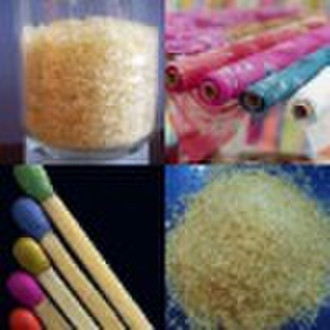Каталог
-
Каталог
- Автомобили и мотоциклы
- Безопасность и защита
- Бизнес
- Бытовая техника
- Бытовая электроника
- Детали машин и услуги по их изготовлению
- Дом и Сад
- Здоровье и медицина
- Игрушки и хобби
- Изделия из металла
- Измерительные и анализирующие приборы и инструменты
- Инструмент
- Красота и личная гигиена
- Мебель
- Мероприятия по охране окружающей среды
- Минералы и металлургия
- Модные аксессуары
- Обувь и аксессуары
- Одежда
- Освещение
- Подарки, сувениры
- Продовольственные товары и напитки
- Промышленное оборудование и техника
- Резина и пластмассы
- Сельское хозяйство
- Специальное оборудование
- Спорт, отдых и досуг
- Сток
- Строительство и недвижимость
- Текстиль и кожа
- Телекоммуникации
- Товары для офиса, учебы. Канцтовары
- Транспорт
- Упаковка и печать
- Химикаты
- Часы, Украшения, Очки
- Чемоданы, сумки
- Электронные компоненты, оборудование, принадлежности
- Электротехническое оборудование и принадлежности
- Энергия
Filters
Search
спичечной промышленности желатин
ориг. цена: 1 702 USD
Хэншуй, Китай

Xunjie Song
Контактное лицо
Основные данные
| CAS никакой. | 9000-70-8 |
|---|---|
| Другие названия | sealants |
| МФ | C102H151N31O39 |
| Регистрационный номер EINECS | 232-554-6 |
| Место происхождения | Hebei China (Mainland) |
| Использование | Fiber & Garment |
| Бренд | xueyang |
| Номер Модели | 300-350bloom |
| Классификация | Другие клеи |
Industrial Gelatin is light yellow or brown grain, which can pass the 4mm aperture standard sieve. The product is under the QB/T1995-94 national trade standard. We can handle the SGS, ITS quality certificate and CIQ veterinary sanitation certificate and the note for changing the certificate of letting pass.ItemUnitJelly Strength(12.5%, 10°C) Bloom g420380300180Viscosity(15%, 40°C) °E10753(12.5% 60°C) mps1714118(12.5%, 60°C)mps1861329660Moisture%15151616Ash%2.02.52.53.0Transparency(5%, 40°C) mm1005025-PH5.5-7ApplicationsCoating and Sizing Technical gelatins are used in the warp sizing of rayon and acetate yarns. The gelatin size adds strength to the warp and resistance to abrasion so that breakage of the warp is minimized. Gelatin is particularly well suited for this application because of its excellent solubility and film strength. It is applied in aqueous solution along with penetrating oils, plasticizers and antifoam agents before weaving, and later removed during finishing by washing with warm water.Panama hats are sized with gelatin. Sizing helps preserve the shape of the hat while imparting resistance to water and dirt. An emerging technology involves the use of gelatin to size quartz fibers for space-age fabrics.Paper Manufacture Gelatin is used for surface sizing and for coating papers. Either used alone or with other adhesive materials, the gelatin coating creates a smooth surface by filling up the small surface imperfections thereby ensuring improved printing reproduction. Examples include posters, playing cards, wallpaper, and glossy magazine pages.High quality rag-based papers, such as those used for blueprints and currency, also feature a gelatin size coating. The result is a paper which has good moisture and abrasion resistance as well as good adhesion to printing inks. During manufacture the gelatin coatings are rendered insoluble by treatment with cross-linking agents.The permanent crinkle in crepe paper is the result of gelatin sizing.Printing Processes For over a century, gelatin compositions have been used in printers' rollers and plate wiping rollers for multicolor presses and offset lithography. Several photo-printing methods depend on the effect of light on a gelatin film which has been sensitized by treatment with potassium or ammonium dichromate. Examples of printing applications include carbon printing, collotype printing, silk screen printing, and photogravure printing.Protective Colloidal Applications Much like edible gelatin is used for clarification of wine, beer and juices, technical gelatins are employed in the removal of extremely fine particles that cannot be settled out or filtered out of chemical solutions. Here gelatin is absorbed onto the surface of the particles effecting a coagulate that may be removed by settling or filtration. Approximately one pound of gelatin per ton of ore is used as a filtration aid during the extraction of uranium ore.Gelatin is used to stabilize emulsions for water-proofing fabrics.In suspension polymerization gelatin functions to control particle size as well as to prevent coalescence of the particles. About one pound of gelatin is sufficient to control particle size in a 10,000 pound batch of polyvinyl chloride.Gelatin is added to electroplating baths to control the deposition rate. Similarly, gelatin functions as a zinc brightener by controlling the crystallization of zinc during deposit.Matches Gelatin is used almost universally as the binder for the complex mixture of chemicals used to form the head of a match. The surface activity properties of gelatin are important since the foam characteristics of the match head influence the performance of the match on ignition.Coated Abrasives Gelatin is used as the binder between the paper substrate and the abrasive particles of sandpaper. During manufacture the paper backing is first coated with a concentrated gelatin solution and then dusted with abrasive grit of the required particle size. Abrasive wheels, disks and belts are similarly prepared. Oven drying and a cross-linking treatment complete the process.Adhesives Over the past few decades gelatin-based adhesives have slowly been replaced by a variety of synthetics. Recently, however, the natural biodegradability of gelatin adhesives is being realized. Today, gelatin is the adhesive of choice in telephone book binding and corrugated cardboard sealing. The tackifying power of gelatin is used to advantage in the manufacture of packaging ribbons, decals, gummed tapes, glass laminates and composition cork gaskets. Hard cover book bindings typically utilize gelatin-based adhesives.Gelatin Films and Light Filters Films of various colors are produced with gelatin for use in photographic lighting and theatrical spotlights. Some bottle caps utilize gelatin films for shrunk-on seals.
Условия поставки и упаковка
Packaging Detail: 25kg/inner waterproof plastic outer wooven bag,20feet container can contain 20 ton.We also can satisfy your own packaging need. Delivery Detail: a week
Порт: tianjin
Условия оплаты
Аккредитив
Электронный перевод
-
Способы оплаты
Для оплаты товаров и услуг на нашем портале, Вы всегда получаете счет, в котором Вам необходимо самостоятельно указать свои данные.
Мы принимаем к оплате:









